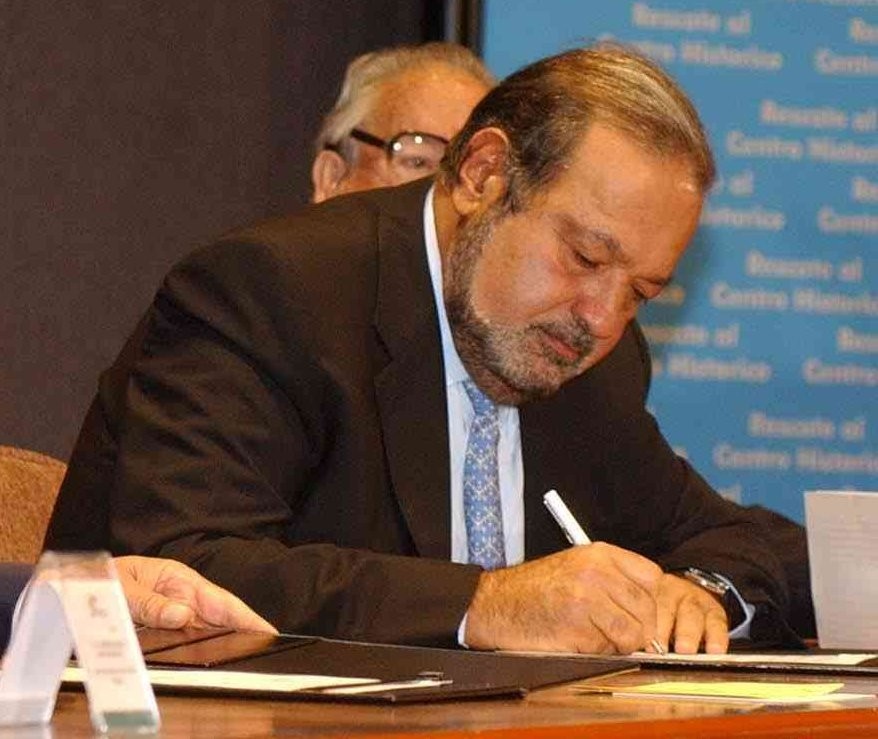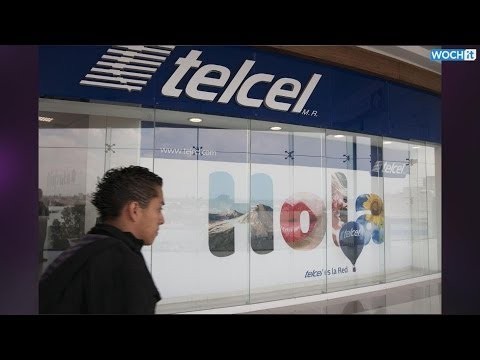Carlos Slim s Giving Side The Billionaire Is Ramping Up Philanthropy
Post on: 22 Май, 2015 No Comment

Related Content
Antonia, a housecleaner and mother of three, describes her recent predicament as “hell.” Falsely accused of theft by an employer, the 39-year-old woman was arrested earlier this year and thrown into a dark cell at the Santa Martha Acatitla penitentiary, on the eastern outskirts of Mexico City. Her husband, a construction worker, couldn’t take time to visit for fear of losing his job. Her oldest daughter, a teenager, had to take care of her young siblings. “I had given up all hope,” recalls Antonia, a sturdy, moon-faced woman.
Then, after 15 days, Antonia was suddenly released. Bail was posted by a lawyer she had never met, and the charges against her were later dropped. Who provided the bail bond and legal aid? None other than Carlos Slim Hel.
Slim’s fierce commercial instincts built Mexico’s largest business empire, spanning telecommunications, finance, mining, real estate and retailing, and have made him the world’s second-richest person, just behind Microsoft Corp. co-founder and chairman Bill Gates. In the process he’s become seen as almost a national scourge, reviled by many Mexicans for his vast wealth and targeted by regulators who seek to reduce his dominance of the telephone market.
That outsize role makes Slim’s latest act perhaps his most intriguing one. Today he is fast developing a new identity as one of the foremost philanthropists outside the U.S. The 73-year-old magnate seems determined to give away a large chunk of his estimated $70 billion fortune. Over the past five years, he has more than doubled the endowment of his two main charitable vehicles — the Carlos Slim Foundation and the Telmex Foundation — to some $8 billion, and disbursed an additional $600 million to combat blight in Mexico City. These sums will swell in the next few years, according to Slim’s relatives, though in keeping with the tycoon’s practice, he has not announced any giving schedule.
“Without doubt, he is already the greatest philanthropist in Latin America,” says Jorge Villalobos, executive president of the Mexican Center for Philanthropy, an entity that keeps track of charitable foundations in Mexico.
Slim’s philanthropic interests are as varied as his business interests. His foundations claim to have donated more than 300,000 bicycles to help children in remote rural areas get to school, given eyeglasses to more than 130,000 poor children, provided maternity care to nearly half a million women and their babies, and carried out more than 800,000 free surgical operations. They provide free access to computers and digital education to more than 2.5 million Mexicans. They have spent more than $100 million to support conservation efforts from the Gulf of California to the reefs off the Yucatn Peninsula. And the foundations have posted bail bonds for nearly 100,000 first-time criminal suspects, like Antonia.
This tsunami of charitable contributions has generated its share of skepticism and controversy. The sheer size and impact of Slim’s business empire make him one of the least popular figures in Mexico. Thanks to his near-monopoly control of Mexico’s telecom market — his biggest company, Amrica Mvil. has 70 percent of the cellular market, and his Telfonos de Mxico, or Telmex. has 80 percent of the landline market — Mexicans pay some of the highest phone and Internet charges in the world, according to a 2012 report by the Organization for Economic Cooperation and Development. (Read more: “ How Multilatinas Are Taking Over the World ”)
As a result, some suspect Slim is raising his philanthropic profile in a bid to shield his enterprises from regulatory and political pressure. In May the Mexican Congress passed a reform bill opening up the telecom sector to more competition, including foreign companies — a key plank in President Enrique Pea Nieto’s program to revitalize the economy. Given Slim’s huge lead, however, the bill’s impact remains in doubt. The mogul insists that his company’s telecom charges aren’t onerous and that the OECD report exaggerated their impact on the Mexican economy.
“Right now there is a lot of pressure in Mexico to break up monopolies,” says Richard Kiy, president of the International Community Foundation, a San Diego–based group that encourages philanthropy in Latin America. “Slim wants to show that Telmex is a responsible corporate citizen.”
Indeed, although the Carlos Slim Foundation has a larger endowment, of $5.5 billion, the $2.5 billion Telmex Foundation has more staff and programs. “It draws on the personnel and resources of Telmex,” says Michael Layton, who directs a research and teaching project on philanthropy at the Autonomous Technological Institute of Mexico, in Mexico City. “When something has to be delivered to the countryside, there is a fleet of Telmex trucks that can do that.”
Some of the polemics surrounding Slim’s philanthropies have been stoked by his own comments. In 2007 he seemed to disparage Gates’s giving efforts by declaring in a press conference that he had no intention of “being Santa Claus.” He insisted that only education and jobs could make a real dent in poverty. More recently, though, Slim has lauded Gates and teamed up with the Bill & Melinda Gates Foundation — along with the Spanish government and the Inter-American Development Bank — in a $150 million project to improve health in southern Mexico and Central America.
Slim has also contributed at least $200 million to Latin American antipoverty projects cosponsored by the Bill, Hillary & Chelsea Clinton Foundation. “Carlos Slim is one of the world’s most important philanthropists, and most people haven’t heard about his humanitarian activities,” former president Clinton said last year in presenting a Clinton Global Citizen Award to Slim in New York.

Yet Slim and his family express a jaundiced view of traditional charity. “We don’t like the word ‘philanthropy’ applied to our activities,” says Arturo Elas Ayub, 45, a Slim son-in-law who serves as CEO of the Telmex Foundation and is also a senior executive at the phone company. The tall, gruff chain-smoker is Slim’s main business spokesman. Like Slim, he is of Lebanese extraction; his grandfather, like Slim’s father, ran a general store in the center of Mexico City.
Slim’s middle son, Marco Antonio Slim Domit, 45, the family member most involved in the Carlos Slim Foundation, insists that his father’s business empire has contributed far more to the welfare of Mexicans than his foundations have. Slim’s businesses employ more than 200,000 people and account for more than one third of the market capitalization of the Mexican stock exchange.
Slim, who declined requests for an interview for this article, wants his foundations to be managed much like his businesses. “We aim to create and support organizations that cut down their costs in order to increase spending on their programs,” says Marco Antonio, who oversees Slim’s financial empire as chairman of Grupo Financiero Inbursa. His brothers, Carlos Slim Domit, 47, and Patrick Slim Domit, 43, have taken turns overseeing the family’s many retail, mining and industrial enterprises. (Slim also has three daughters, who have been active in the foundations but not the family businesses.) Another son-in-law, Daniel Hajj Aboumrad, is CEO of Amrica Mvil.
The idea of conducting philanthropy according to business principles is hardly a new one. Self-styled social entrepreneurs tout impact investing as a way to drive real change with measurable “returns”; Warren Buffett’s grandson Howard Buffett is a big proponent. Slim’s foundations give the concept much more than lip service, though, and insist that their charitable activities are managed as tightly as their patron’s for-profit enterprises.
Rather than simply making grants to existing health, educational and other entities, Slim prefers to create and fund institutes that then partner with other organizations — typically, government agencies — to deliver goods and services. “We look for government-backed health programs that are already in place and staffed with personnel that has already been trained,” says Ricardo Mjica, executive director of the Carlos Slim Institute of Health, an arm of the Slim Foundation. “Then we will offer these hospitals new, advanced technology for their patients. We don’t want to build our own hospitals, but we don’t want to simply give away money, either.”
The foundations are notably silent, however, on one key business principle: transparency. Their annual reports provide plenty of statistics on the number of bicycles and eyeglasses given away, the surgical operations financed and the computers donated, but no hard numbers on spending or staffing. That’s a stark contrast to the meticulous financial disclosures that Slim and his shareholders demand from their myriad companies. “They are not known for transparency,” says ITAM professor Layton. “They are very light on financial figures in their annual reports.”
The lack of transparency has hindered wider recognition of Slim’s growing charitable efforts and served as fodder for his bitter business rivals. Some Slim family members darkly suggest a plot against their business and foundation activities by other magnates, such as Emilio Azcrraga, owner of Grupo Televisa, and Ricardo Salinas Pliego, majority shareholder of TV Azteca, who between them have a virtual duopoly on broadcast television. “The problem is that our competitors — I would call them enemies — control a lot of the media and have created a very negative image of us,” says Slim son-in-law Elas. “The only way to counter this is by our accomplishments over time.”














